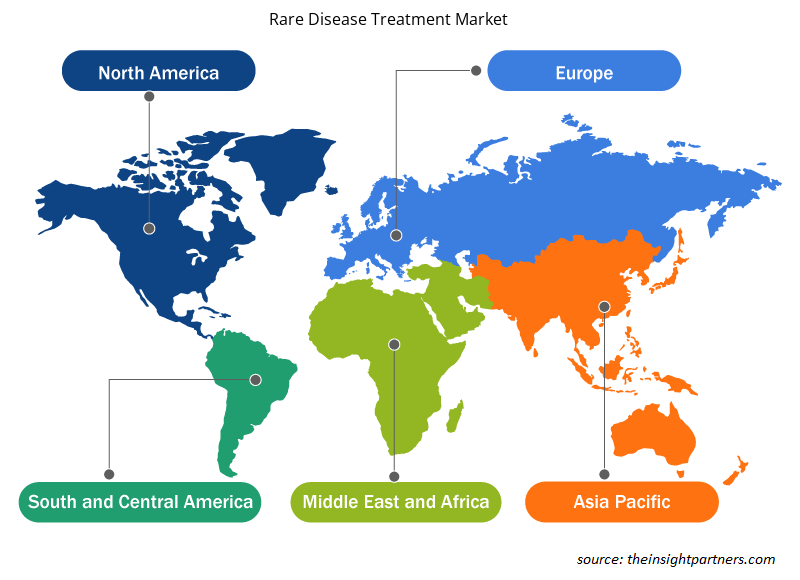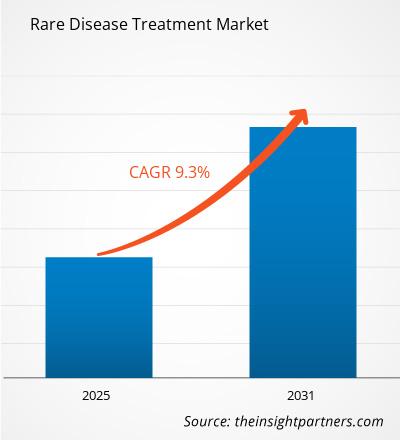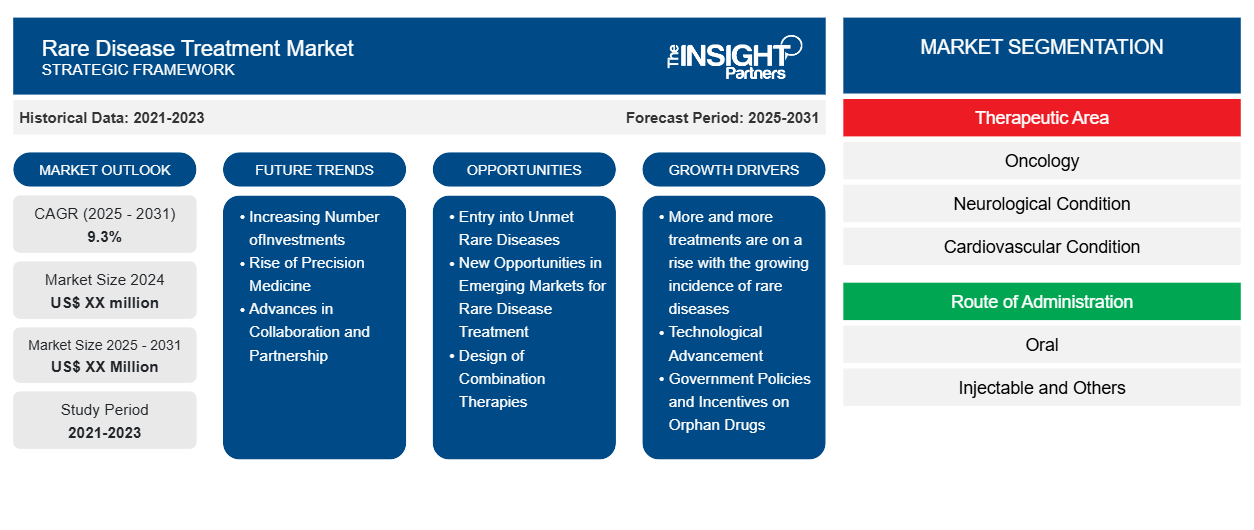预计罕见病治疗市场在 2024 年至 2031 年期间的复合年增长率为 9.3%,市场规模将从 2024 年的 XX 百万美元扩大到 2031 年的 XX 百万美元。
报告按治疗领域(肿瘤、神经系统疾病、心血管疾病、肌肉骨骼疾病、传染病、其他)、给药途径(口服、注射和其他)、药物类型(生物制剂、小分子和生物仿制药)和分销渠道(网上药店、专科药店和医院药店)进行细分,
全球分析进一步细分为区域和主要国家。报告以美元为单位提供上述分析和细分的价值。
报告目的
The Insight Partners 发布的《罕见病治疗市场》报告旨在描述当前形势和未来增长、主要驱动因素、挑战和机遇。这将为各种业务利益相关者提供见解,例如:
- 技术提供商/制造商:了解不断变化的市场动态并了解潜在的增长机会,从而能够做出明智的战略决策。
- 投资者:对市场增长率、市场财务预测以及整个价值链中存在的机会进行全面的趋势分析。
- 监管机构:监管市场政策和警察活动,旨在最大限度地减少滥用行为,维护投资者的信任和信心,维护市场的完整性和稳定性。
罕见病治疗市场细分
治疗领域
- 肿瘤学
- 神经系统疾病
- 心血管疾病
- 肌肉骨骼疾病
- 传染病
- 其他的
给药途径
- 口服
- 注射剂及其他
药物类型
- 生物制剂
- 小分子和生物仿制药
分销渠道
- 网上药店
- 专业药房和医院药房
定制此报告以满足您的需求
您可以免费定制任何报告,包括本报告的部分内容、国家级分析、Excel 数据包,以及为初创企业和大学提供优惠和折扣
-
获取此报告的关键市场趋势。这个免费样品将包括数据分析,从市场趋势到估计和预测。
罕见病治疗市场增长动力
- 随着罕见病发病率的不断上升,治疗方法也越来越多:医疗保健中发现罕见病的成功率提高了患者的诊断率,从而继续扩大了专科治疗市场。其中,遗传学、自身免疫和需要特殊治疗的神经系统疾病是其中的佼佼者。
- 技术进步:生物技术和基因编辑技术(例如 CRISPR 技术)的进步改变了罕见病的治疗方法。高级个人治疗本质上是一种针对遗传疾病原因的基因治疗,它推动了更先进的治疗方法。制药公司和投资者响应这一需求,因此增加了罕见病治疗的市场规模。
- 政府对孤儿药的政策和激励措施:世界各国政府正在制定立法,鼓励开发治疗罕见疾病的药物。在美国,税收减免、市场独占权和补助金是《孤儿药法案》下的激励措施,可给予开发治疗罕见疾病药物的公司。其他地区和欧盟的计划使对罕见疾病药物的投资更加有利可图
罕见病治疗市场未来趋势
- 投资数量不断增加:在罕见病治疗领域,对基因和细胞疗法的投资数量不断增加,这一领域将继续增长,尤其是在囊性纤维化或杜氏肌营养不良症等遗传疾病方面。就基因和细胞疗法而言,通过解决这些疾病的遗传原因,有可能治愈或长期管理这些疾病。这是在罕见病领域观察到的一个特殊趋势。
- 精准医疗的兴起:如今,精准医疗已成为罕见病治疗领域最新的决定性趋势之一。随着基因组学的革命,尤其是生物标志物的识别,针对基因图谱的治疗可以代表有效且有针对性的疗法,尤其是针对罕见和复杂的疾病,从而实现更好的患者治疗效果,并减少药物的副作用,因为精准治疗可以针对特定的基因突变。
- 合作与伙伴关系的进步:制药公司与学术界、生物技术公司和患者权益组织合作,寻找罕见病的潜在新疗法。在这方面,这种合作共享资源和专业知识,以加快新疗法的开发。此外,这些合作模式将在继续实施公私合作安排的罕见病领域蓬勃发展。
罕见病治疗市场机会
- 进入尚未得到满足的罕见疾病领域:罕见疾病是医药公司可以重点关注的广阔领域,因为大多数此类疾病没有有效的治疗方法或疗效有限。公司可以将注意力集中在罕见癌症、神经肌肉疾病和罕见代谢紊乱等领域的未满足需求,以填补当前疗法的空白,并开拓利润丰厚但对创新疗法需求旺盛的小众市场。
- 新兴市场为罕见病治疗带来新机遇:随着新兴市场医疗保健服务优势的日益明显,亚太、拉丁美洲和中东等地区对罕见病治疗的需求正在上升。由于人们对新疗法的认识和诊断能力不断提高,公司在考虑进军这些地区方面拥有巨大的机遇。
- 联合疗法的设计:由于大多数罕见病都很复杂,因此可能需要多方面的治疗过程。这将为设计联合疗法提供一个机会,这种疗法可以同时从多个方面影响罕见病并增强治疗效果。这非常适用于罕见癌症、自身免疫性疾病和遗传性疾病等需要采用多种药物治疗的疾病。
罕见病治疗市场区域洞察
Insight Partners 的分析师已详尽解释了预测期内影响罕见病治疗市场的区域趋势和因素。本节还讨论了北美、欧洲、亚太地区、中东和非洲以及南美和中美洲的罕见病治疗市场细分和地理位置。

- 获取罕见病治疗市场的区域特定数据
罕见病治疗市场报告范围
| 报告属性 | 细节 |
|---|---|
| 2024 年的市场规模 | XX 百万美元 |
| 2031 年市场规模 | XX 百万美元 |
| 全球复合年增长率(2025 - 2031) | 9.3% |
| 史料 | 2021-2023 |
| 预测期 | 2025-2031 |
| 涵盖的领域 |
按治疗领域
|
| 覆盖地区和国家 |
北美
|
| 市场领导者和主要公司简介 |
|
罕见病治疗市场参与者密度:了解其对业务动态的影响
罕见病治疗市场正在快速增长,这得益于终端用户需求的不断增长,而这些需求又源于消费者偏好的不断变化、技术进步以及对产品优势的认识不断提高等因素。随着需求的增加,企业正在扩大其产品范围,进行创新以满足消费者的需求,并利用新兴趋势,从而进一步推动市场增长。
市场参与者密度是指在特定市场或行业内运营的企业或公司的分布情况。它表明在给定市场空间中,相对于其规模或总市场价值,有多少竞争对手(市场参与者)存在。
在罕见病治疗市场运营的主要公司有:
- F.霍夫曼-罗氏有限公司
- 辉瑞公司
- PTC 治疗公司
- 诺华公司
- 武田药品工业公司
免责声明:上面列出的公司没有按照任何特定顺序排列。

- 了解罕见病治疗市场顶级关键参与者概况
主要卖点
- 全面覆盖:报告全面涵盖了罕见疾病治疗市场的产品、服务、类型和最终用户的分析,提供了整体概况。
- 专家分析:报告基于对行业专家和分析师的深入了解而编写。
- 最新信息:该报告涵盖了最新信息和数据趋势,确保了其与业务的相关性。
- 定制选项:此报告可以定制以满足特定客户要求并恰当地适应业务策略。
因此,罕见病治疗市场研究报告有助于引领解读和了解行业情景和增长前景。尽管可能存在一些合理的担忧,但本报告的总体优势往往大于劣势。
- 历史分析(2 年)、基准年、预测(7 年)及复合年增长率
- PEST和SWOT分析
- 市场规模、价值/数量 - 全球、区域、国家
- 行业和竞争格局
- Excel 数据集
近期报告
客户评价
购买理由
- 明智的决策
- 了解市场动态
- 竞争分析
- 客户洞察
- 市场预测
- 风险规避
- 战略规划
- 投资论证
- 识别新兴市场
- 优化营销策略
- 提升运营效率
- 顺应监管趋势























 获取免费样品 - 罕见病治疗市场
获取免费样品 - 罕见病治疗市场